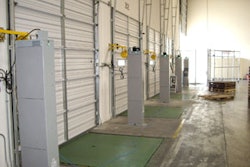
Customers want it all: deeper price reductions, broader product customization and, of course, faster and more reliable product delivery. At many companies, the reflexive response to these demands has been to outsource non-core activities, offshore whatever can be offshored, shift production and sourcing to lower-cost countries, and offer increased levels of product customization. In doing so, companies have exponentially increased their reliance on distant business partners and suppliers while straining their management processes and policies. It is difficult enough to plan, make and deliver goods and services with full control of these business processes; extending them around the world and across layers of different companies increases the challenge by several scales of magnitude.
So, where should companies focus, and what levers should they pull to ensure that products are delivered on time, with lead times acceptable to customers? Can this be done without running assets overtime and employing expedited delivery methods or without excessive amounts of inventory — actions that could "break the bank"? To deal with these complexities, companies are tracking more and more elements of their business at increasingly fine levels of detail. They are focusing on a growing number of performance levers to help alleviate some of the pain and are getting inundated with the latest management fads and improvement tools.
Our own research and client work suggest there are ultimately just three critical operational resources that businesses need to balance and get "right" in order to succeed: capacity, inventory and lead time. While this may be a very simple notion on the surface, the fact remains that most companies struggle with effectively optimizing these resources holistically and in an integrated fashion across their extended enterprises. This "silo" approach to optimizing each resource independently frequently leads to poor cost, quality and delivery performance. One need look no further than the trend to outsourcing for lowest cost to see the negative impacts that organizations are driving in lead-time performance, inventory performance or both.
The Three Critical Operational Resources
Three critical operational resources — capacity, inventory and lead time — ultimately determine how quickly, reliably and at what cost a value chain can deliver products to the end customer. But while most companies recognize the implications of each resource on its own, few understand their interactions well enough to make explicit and accurate business tradeoffs between them. Even fewer actually attempt to optimize all three holistically to satisfy customer requirements. Operations research experts can derive the interactions and tradeoffs on a mathematical basis, but unanswered is the question of how managers can use the insight to make the right decisions within their organizations.
To fully understand the interactions between capacity, inventory and lead time, it is important to grasp how each of these critical operational resources individually affects the dimensions that matter to customers — quality, price and delivery — with a particular focus on reliable, on-time delivery.
Capacity
Capacity, the most monitored of the three critical operational resources, consists of the machine capacity, labor capacity and physical space required to achieve a desired level of output within a desired period of time.
All businesses are concerned about capacity — they measure it, make annual or quarterly decisions about it, and track its utilization religiously. Few companies, however, appropriately take the notion of demand "uncertainty" into consideration when planning for their capacity needs. Even fewer look at capacity in conjunction with inventory decisions (for both raw materials and finished goods) and inbound/outbound order-to-delivery lead times. Why and how are lead time and inventory important when planning for capacity? Why and how does uncertainty affect capacity decisions?
Consider the example of a global electronic components manufacturer that we worked with. The company had a laser focus on cost and capacity utilization; however, the result was very low levels of inventory (to keep the cost down) and poor on-time delivery performance. When planning capacity, the goal was to have 80-90 percent capacity utilization "on average" throughout the year. On a weekly basis, however, demand spikes often significantly exceeded available capacity. Without sufficient inventory buffers or capacity buffers to account for short-term demand volatility, the only critical operational resource that had to "give" was lead time. And give it did, as on-time delivery performance across the network of plants was at 45-70 percent, one of the worst levels in this industry. Delivery reliability was singled out as a major problem by every single customer we interviewed.
When decisions about required capacity are made, demand levels, short-term volatility of demand and desired order-to-delivery lead time should be an integral part of the overall resource planning. Key decisions that must be made include where capacity should be located across the extended value chain (e.g., at the company, its suppliers or its customers), in what form (e.g., capital assets, labor, etc.) and at what levels. Is it better to build extra capacity into the value chain to buffer against the demand and supply uncertainties, or to hold inventory to protect against these volatilities in the extended business model? Or should a blended approach that does both be implemented?
Inventory
While the level of finished goods inventory has an obvious and direct impact on customer service levels, the ways in which on-hand inventory affects capacity and order-to-delivery lead time are not fully appreciated. Theoretically speaking, the higher the level of finished goods inventory on hand, the higher the achievable customer service level (assuming that the inventory includes the right goods in the right location). Also, increased levels of finished goods inventory allow a company to promise shorter order-to-delivery lead times to end customers and make it possible to accept longer inbound lead times from both internal and external suppliers.
However, decisions regarding raw material inventory also affect production capacity requirements — and, subsequently, order-to-delivery lead times for getting finished goods to end customers. For example, a paint manufacturer in the U.S. discovered that a significant portion of its plant's capacity was idled by "waiting for raw materials" to arrive from suppliers or "be found" in its own warehouse. Luckily, the manufacturing and labor capacity of the plant was sufficient to compensate for the poor inbound supply chain and ensure on-time delivery to customers. However, the additional cost between these inefficiencies could have been avoided.
Lead Time
Rather than looking at order-to-delivery lead time as a distinct, addressable facet of operations, companies inevitably view it as the result of a series of decisions made with regard to manufacturing capacity and inventory levels. Very few companies make decisions about capacity and inventory in conjunction with desired lead times and service levels, which inevitably leads to a disconnect between functional areas. For example, Production cannot meet delivery dates that Sales promised to customers. Procurement grants lead-time extensions to suppliers in exchange for piece-price reductions without fully understanding the impact of such a move on production capacity and raw material inventory levels. Finance demands reductions in the finished goods inventory levels without considering the impact this action will have on end-customer service levels and the company's ability to quickly produce and deliver. Production reduces raw material and component stock without considering the potential impacts on manufacturing capacity. As with capacity and inventory, decisions affecting value chain lead times can be leveraged to meet customer order-winning criteria.
How Key Trends Affect the Critical Operational Resources
Globalization, continued capacity consolidation, increasing product complexity and a growing acceptance of the extended enterprise business model each have an effect on all elements of the critical operational resources. As shown in Figure 1, the overall impact of current business trends on delivery performance is largely negative, as they lead to longer and more variable lead times, higher capacity requirements and increased uncertainty around product demand and order-to-delivery lead times. This is not surprising given that the trends are primarily occurring as companies seek lower costs. Nonetheless, it makes it increasingly challenging for companies to achieve increased customer service levels without increasing their costs, significantly changing their internal processes and/or making major investments in sophisticated information technology solutions to help mitigate or offset such negative impacts.
What are some of the solutions that companies deploy to grapple with this increasing business complexity? How can companies focus on the basic critical operational resource elements in their everyday decision making and ignore the distractions of other potential improvement tools? What do the leading companies do to address this mounting operational complexity across their extended enterprises?
The "Silver Bullet" — Making the Connections
Companies have been launching a range of value chain-related initiatives in an attempt to address aspects of critical operational resources to achieve goals like improved customer service levels, reduced finished good or raw material inventory, improved manufacturing capacity utilization and production network footprint reconfiguration. The most sophisticated companies have come to realize that capacity, inventory and lead time are all interconnected, and that changing one of these three elements inevitably affects the other two. So, are there any "silver bullets" — that is, a straightforward and effective solution to a prevailing challenge — that could help to combine all these critical resource elements into a well-integrated planning and execution process to drive high levels of predictable customer service?
Developing "Buffers" to Improve On-Time Delivery Performance
Just as an inventory "buffer" can be created in the form of a safety stock, capacity and lead time can also be buffered. For instance, the telecommunications and data computing industries widely use redundant capacity — extra capacity that is used only when user traffic or data flow surges by hundreds or thousands of percentage points above normal demand. Similarly, manufacturing and service companies will add redundant capacity (i.e., create a significant capacity buffer) to ensure that virtually anything can be produced at any point in time. Unfortunately, given basic cost economics, these solutions can generally only be applied in industries that have very high gross margins, such as telecommunications, pharmaceutical or biotech — i.e., businesses for which the marginal value of a lost sale is substantially higher than that of an extra unit of capacity or inventory. Alternatively, companies could create order-to-delivery lead-time buffers by notifying their customers that lead times will now be months (or even years) rather than days or weeks. But of course, few customers — short of government agencies like NASA or the armed forces that purchase one-of-a-kind items — can wait months or years for a product to be delivered.
These extreme examples, of course, cannot be applied to most companies' business situations. But there are ways to address the issue of low or unpredictable delivery performance in a cost-effective manner within customer-acceptable lead times. Such solutions mandate a differentiated approach, whereby a company strategically decides which combination and degree of the three critical operational resource buffers are cost effective to implement and capable of establishing order-to-delivery lead times that customers will accept. The deeper or more refined the differentiation is, the more "silver" the bullets become.
Making Differentiated Customer Service Strategies a Reality
Differentiated order fulfillment strategies are key to cost effectively meeting or exceeding the requirements of a company's varied customer segments. Companies need to understand what each customer segment values in terms of cost, quality, features and delivery performance. They invariably differ across diverse customer groups and should therefore be addressed with a different set of tradeoffs. For some segments, high levels of relatively standard finished product inventory should be held to achieve fast delivery and the highest level of cost-effectiveness. In other segments, a manufacturing capacity buffer is more appropriate than a finished goods inventory buffer in order to provide customized products to a highly volatile market place. The key is to understand the customer requirements and then balance capacity, inventory and lead time so that those requirements can be met cost effectively.
In the above-mentioned example of a global electronic components manufacturer, all decisions around the three critical operational resources were made separately, without appreciation for the impact that each has on the others.
Demand was characterized by significant short-term fluctuations and seasonality. Capacity planners, however, worked under the assumption that demand would come in a steady, predictable flow. Mathematically speaking, this meant that the company was poised to deliver an average 50 percent service level at its plants, which is in fact what many plants achieved. Plants delivered higher than 50 percent when demand fell below the yearly average, and lower than 50 percent when demand spiked above the yearly average.
As for lead time, planners established that outbound lead time — from the manufacturing plant to the warehouse — was not to exceed three weeks. But this subjective goal was not incorporated into capacity planning, capacity network configuration or raw material inventory levels. As the customer-expected lead time shortened, the business needed more and more capacity in order to reach customer service levels above 50 percent, and the nearer each network facility and node needed to be to one another.
A similarly underdeveloped approach was taken to raw material inventory despite the severe ramifications resulting from production rescheduling for want of raw materials. (Lack of raw materials also can "eat" into available capacity by idling both machines and labor and forcing unplanned changeovers.) This particular company had an internal policy to keep on-hand raw material inventory levels limited to no more than two weeks, regardless of external or internal suppliers' lead time and supply uncertainty. As a result, nearly 5 percent of the company's capacity downtime was attributed to "missing components."
In another example, we helped a North America-based high-tech product manufacturer successfully balance its supply chain's core operational resources in order to exceed customer performance requirements. Prior to implementing this strategy, the company took a one-size-fits-all approach to products and customers. Customers could order products with dramatically different levels of customization and still expect the same order-to-delivery lead time of three to four weeks — a situation that led to more than 60 percent of customers reporting dissatisfaction with some aspect of the company's performance.
Under the new strategy, "core" raw materials and component inventories were held only for "standard" configurations, which the company guaranteed to deliver within two weeks. These "core" components permitted the company to assemble-to-order the so-called "standard" configurations representing 80 percent of the company's sales, which still satisfied the high levels of customization almost all customers required. Many of these "core" components were sourced for low cost from Asia. All products that were classified as "non-standard" had longer delivery lead times — but most of their "non-core" components were sourced from the supplier's domestic locations in order to maintain an overall order-to-delivery lead time of less than six weeks. The Asian suppliers were managed for low cost with high levels of predictability, while domestic suppliers were managed for lead time and capacity to ensure reasonably quick deliveries of unique components.
To help ensure quick delivery once the raw materials and components were received, the company's plant maintained capacity flexibility in final assembly, testing and outbound distribution to manage peaks in demand. The result of these new strategies was a rapid improvement in on-time delivery performance from 40 percent to 90 percent, a 60 percent inventory reduction, a low-cost profile for the majority of the product line through low-cost-country sourcing, and the ability to meet all configuration requirements of customers through one of the two supply chains.
Determining where and how the critical operational resources were positioned in this global value chain helped to dictate the enabling processes, policies and measures that needed to be established. Initially, delivery reliability was emphasized over speed with internal and external suppliers. The company established and shared measures and took corrective actions where needed. It also upgraded or adapted systems to provide greater visibility of transactions across the value chain, and it improved communications internally as well as up and down the value chain with suppliers and customers. At long last, the performance promised by the sales force could be met in a cost-effective fashion, and operations could deliver consistently and reliably against deadlines.
The Three "Silver Bullets": Using the Critical Operational Resources as a Strategic Weapon
The need to undertake efforts like the above examples will only grow in coming years. Most companies will continue to focus on their core competencies and outsource many parts of the business they deem to be non-core. Additionally, increased partnering efforts and the emerging "networked business" models will see companies working together in new ways. These trends toward extended supply chains and the ongoing move toward virtual value chains make it absolutely imperative that businesses fully understand the tradeoffs they are facing as a result of outsourcing production, increasing the use of contract manufacturers and shifting production and/or supply to low-cost countries.
Because the dynamic business environment is characterized by constantly changing customer demand, unexpected disruptions in supply lines, rapid technological obsolescence and continuously reconstructed value chains, decisions about the three critical operational resource buffers will need to be reexamined on a continuous and collaborative basis. All key functions must actively participate in and contribute to this process. This will help to ensure that the company's plans and decisions are developed and made in a truly integrated fashion and, furthermore, that the plans and decisions of the various partners within the extended enterprises and value chains are also fully integrated.
While the concept is simple, few companies/value chains have pushed aside the distractions of the latest improvement fads and demonstrated the discipline and focus to consistently achieve top performance. Those that have religiously review, refine and improve the tradeoffs between our three cross-enterprise, operations management "silver bullets": capacity, inventory and lead time.















